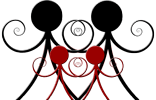Gene therapy makes major stride in ‘Lorenzo’s Oil’ disease
In the third gene-therapy success of recent weeks, French researchers have arrested the progression of the rare and fatal degenerative disorder adrenoleukodystrophy, which was at the heart of the popular movie “Lorenzo’s Oil.” The disease has stabilized in two boys who were 7 years old when the therapy was performed two years ago, the team reported today in the journal Science.
“This is a disease that never, ever stabilizes” on its own, said Dr. Katherine A. High of the Children’s Hospital of Philadelphia, who was not involved in the research. “The fact that they were able to achieve that means they are getting a therapeutic effect.”
This is the fifth disease for which gene therapy has been shown to be beneficial, said Dr. Theodore Friedmann of UC San Diego, who was also not involved. “That’s a major achievement for a field that has been in the clinic for only 18 or 19 years. . . . This is a new form of medicine and deserves to be seen as such.”
The French team has already treated a third boy who has the disease. Although results are not yet available in that case, the team plans to expand the trial to others, including older men with a milder form of the disease.
Adrenoleukodystrophy, commonly known as ALD, is identified in about 120 young boys in the U.S. each year. Those born with the defective ALD gene appear to be normal until about age 5, “when a really catastrophic process of progressive, relentless demyelination [of the brain] sets in that leaves them vegetative or dead within one to two years,” said Dr. Florian Eichler of Massachusetts General Hospital, an expert in the disease. “This is as bad as neurological disorders get.”
If the disorder is identified before brain deterioration begins, the concoction known as Lorenzo’s oil — a mixture of fats from olive and rapeseed oils that purportedly reduces abnormally high levels of damaging long-chain fatty acids in the brain — can delay the disease’s progress somewhat.
Once deterioration begins, however, the only option has been a bone marrow transplant. For the few children who have a closely matched sibling, the procedure can arrest progression. A transplant from a less closely matched donor can help, but can also have severe side effects. Some patients, for example, must use a wheelchair as a result of the procedure.
The new research was conducted by a team headed by Drs. Nathalie Cartier and Patrick Aubourg of Paris Descartes University, who have been involved in previous successful studies of severe combined immunodeficiency disease.
They took the healthy form of the ALD gene and inserted it into HIV — the AIDS virus — that had been “defanged” so that it could no longer cause disease. HIV, from the lentivirus family, has been of great interest to gene therapists because it can insert genes into cells that are not actively dividing. Previous viruses used as delivery systems have only been able to insert genes into cells that are dividing.
The HIV delivery system may also be safer. Mouse retroviruses that have been used in previous studies of gene therapy can activate genes near where the added gene is inserted into the chromosome, potentially creating problems. That may be why a gene-therapy treatment for X-linked severe combined immunodeficiency, or SCID, caused some cases of leukemia. Lentiviruses are much less likely to turn on unwanted genes.
Despite years of research, this is the first time that a lentivirus has been used in a human trial. Aubourg and his colleagues chose it because it introduces the desired gene into a higher proportion of cells.
The French team isolated bone-marrow stem cells from the two boys, then used the virus to introduce the healthy ALD gene. They then did the equivalent of a bone-marrow transplant, destroying the boys’ marrow and introducing the modified cells, which proliferate to form new marrow. About 15% of the cells began producing the desired protein, and production has persisted for the two years of follow-up.
Fifteen percent may not seem like much, but “it is a level that would be therapeutic for a variety of other diseases, like sickle cell disease,” said Dr. Donald Kohn, a gene-therapy researcher at UCLA.
He noted that the first successful treatment for SCID in Milan got production of the desired gene in only “1% of cells at best.”
The effects on the disease were about the same as those from a successful bone-marrow transplant using closely matched cells, Aubourg noted.
“That’s good news because many patients don’t have access to bone-marrow transplants [that are good matches], and it is not an innocuous procedure,” Friedmann said.
The team documented its success in arresting the disease in a variety of ways, and was able to demonstrate that the procedure was safe.
In the last two weeks, researchers have reported using gene therapy to treat an eye disease called Leber’s congenital amaurosis and to rejuvenate human lungs that would otherwise be unfit for transplantation — although treated lungs have not yet been transplanted into humans. Two forms of SCID had previously been cured, and now ALD.
Gene therapy “has crossed a threshold, scientifically and medically, and also in credibility,” Friedmann said. These studies “are not hype; they are not hyperbole. They really are providing treatment for sick people.”
